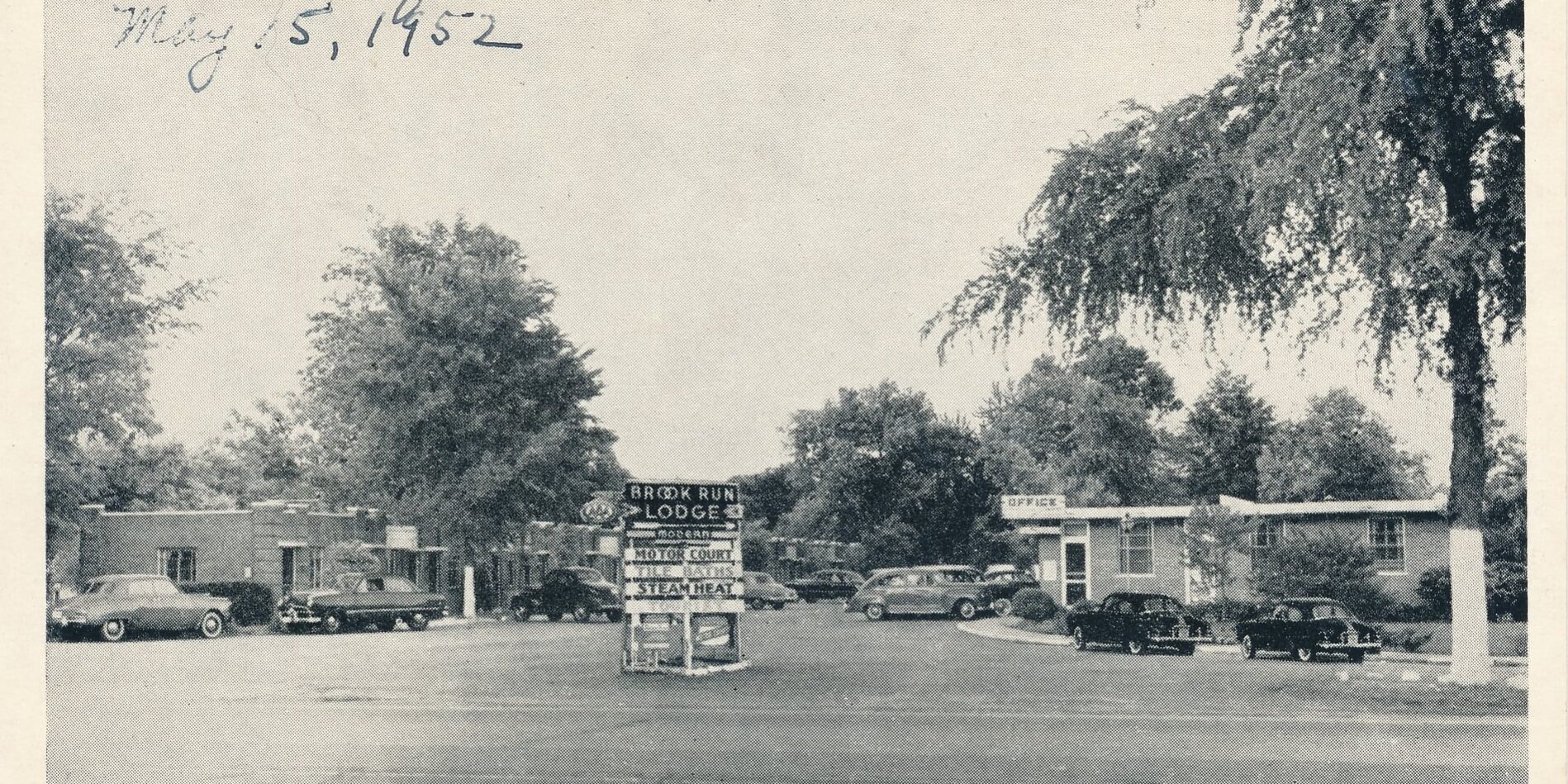
Richmond Rest-Over
“Third Night, May 15, 1952.” On the pre-Interstate road to Florida, Richmond, Virginia, was a day away from most Northeastern cities and two days away from the rest.
South from Richmond it was a long way to anywhere, making Richmond the place to rest-over. The legacy of Richmond’s rest-over role is a pile of postcards depicting long gone motels and tourist courts like the Brook Run Lodge on US 1 north of the city limits.

Federal Routes 1 and 301, the main north-south roads through Richmond, joined on the northern city limits where one of two major motel strips operated. The routes ran concurrent over the Lee Bridge across the James River to a second motel strip along the Jefferson Davis Highway on the southside of Richmond.

Royall’s Tourist Camp operated on what was known as the Washington Highway, which in 1926 became US 1, the Atlantic Seaboard’s main road from Maine to Florida. Paving was completed on the section of Route 1 between Richmond and Washington in 1927, the year this postcard was sent, explaining; “This is where Billy stayed overnight going and coming from the South.”

The expansive Richmond Auto Court with its 24-hour Esso service station and Colonial Dining Room was the king of the northside Route 1 rest-overs. When suburban sprawl replaced long-distance traveler services, its location at 7204 Brook Road became a shopping center.

The meat and produce served at the Wigwam Restaurant and Motor Court came from proprietor I. O. Keeton’s 400-acre farm located on US 1 seven miles north of Richmond. Naturally, the Wigwam’s specialties were exactly what Yankee motorists were looking for; Southern fried chicken and Virginia ham.

Route 1 and 301 joined on the northern border of Richmond at the intersection of Azalea Avenue and Chamberlayne Road where Chamberlayne Motel was built in the popular Southern motel mode of a mini-Mount Vernon. It is one of the few accommodations in Richmond’s northside motel strip that still stands.

The White House Motor Lodge was a more substantial mini-Mount Vernon motel that is still in business in Richmond’s southside Jefferson Davis Highway motel strip.

Ford’s Motor Court was a collection of Tudor-styled, knotty-pine cabins that sold traditional domesticity along US 1-301 halfway between Richmond and Petersburg. Their postcard tag line was, “East to Find – Hard to leave.”

In contrast to Ford’s, nearby Moore’s Brick Cottages sold modernity to travelers on US 1-301 in 1941 with its streamlined air-conditioned restaurant and “Modern Cottages.”

Whereas US 1 was the Main Street that linked the cities of the Northeast Megalopolis with Raleigh, Columbia, Jacksonville and the cities of Florida’s Atlantic coast, paralleling US 301 bypassed every city except Richmond, ending up in Sarasota, Florida, by going through nothing larger than Fayetteville, North Carolina. Emporia, Virginia, depicted on this 1950 postcard through the gateway arches of a reinforced concrete rainbow bridge, was typical of the small southern towns served by US 301.
 The Richmond Rest-Over was fundamentally altered by the 1958 opening of the Richmond-Petersburg Turnpike, the first segment of Interstate 95 built to bypass US 1 in Virginia. The northside Routes 1-301 motel strip was buried by suburban sprawling retailers. The southside motel strip limps along as a low-budget alternative with easy access to I-95.
The Richmond Rest-Over was fundamentally altered by the 1958 opening of the Richmond-Petersburg Turnpike, the first segment of Interstate 95 built to bypass US 1 in Virginia. The northside Routes 1-301 motel strip was buried by suburban sprawling retailers. The southside motel strip limps along as a low-budget alternative with easy access to I-95.


